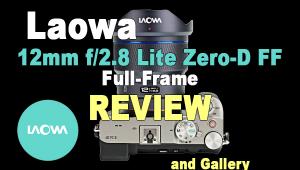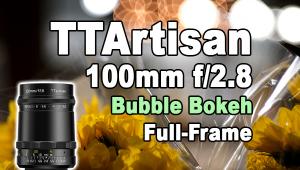Lens Review: Tamron SP 150-600mm f/5-6.3 Di VC USD, A Long-Range Tele-Zoom With Vibration Compensation

All Photos © George Schaub
Being in general a wide to moderate tele-zoom kind of guy, I have found myself occasionally frustrated by lacking a long zoom or tele prime when shooting in the great outdoors. There are some scenes and places that cry out for a longer focal length, and it’s not from laziness but more accessibility that creates the need. Yes, you can “zoom with your feet,” as the expression goes, but not when looking down long valleys from the cliffs above or when you want to get the kind of stacking and compression effects that only a long lens can supply, at least without some kind of severe frame crop. So, when I got a chance to test out the Tamron 150-600mm lens I jumped at the chance, especially since it coincided with a planned trip to New Mexico.

Lens Specs
First, though, some specs. The lens is built for “full-frame” D-SLRs, thus those with APS-C sensor cameras will have an effective 225-900mm in hand. It measures 10.5 inches at the 150mm focal length and goes to 13.5 inches at the 600mm length; add another 4 inches when the supplied lens hood is attached. It comes with a tripod collar, useful for taking the weight off the camera body when mounted and shooting at the longer lengths. But it is also an image stabilized lens (VC in Tamron parlance, in Canon and Nikon mounts, not in Sony A mount) so the extra three stops it affords makes hand holding feasible, as borne out in my tests. (Note: Be sure to turn VC off when a tripod is mounted.) Tamron claims a four-stop advantage because of the triaxial VC design; I keep it “safe” at three.
The maximum aperture drops to f/6.3 when you zoom out with a minimum aperture of f/32 to f/40 at the longer lengths. If shooting at those narrow apertures you probably need a tripod unless shooting in a cloudless, full sun desert, or will have to jump the ISO. The minimum focusing distance is about 9 feet, and although that sounds like a lot you can get some rather amazing bokeh effects by shooting “close-ups” at that distance with a middling or wide aperture, thanks in part to the nine-bladed circular diaphragm. Filter size is what you might expect for this glass—95mm—so buying a polarizer or ND (although an ND does not seem necessary with that narrow a minimum aperture) can be a pricey situation. The lens weighs in at about 68 oz, which might seem like a lot but is actually quite “carry-able” when attached and roaming around for shots.



Field Tests
My first round of tests was to check for vignetting at various apertures and focal lengths. It’s practical rather than scientific, being shots of a neutral sunlit wall with the lens defocused. As you might expect, there was evidence of some vignetting at the (widest) aperture at the shorter focal lengths, with a bit more marked vignetting as I progressed through the focal lengths at widest apertures, but nothing that wasn’t easily adjustable using an Adobe Camera Raw custom lens profile.
I then had fun with the lens in the field. I took a few day trips from my base in Taos to the Taos Ski Valley and the Chama River Valley, home of Plaza Blanca, Ghost Ranch, and more exciting vistas. I shot mostly hand held with my Canon full-framer, although I had my Manfrotto 190XPROB carbon-fiber tripod along and used that occasionally as well. See the accompanying images and captions for details and comments.


Conclusions And Recommendations
I must admit that part of my excitement of working with the lens was the fact that I rarely do field shoots with more than a 150mm focal length, and having the Tamron 150-600mm lens in an area with great landscape potential was great visual fun. I kept VC on for most of my shots (except those on a tripod) and was able to get steady shots even at the longest focal length by ensuring that I kept within the 1/focal length rule with VC’s effects taken into account. The sharpest images were in the 150-500mm range, although I do not have a camera without a low-pass filter: according to DxO tests this can make a difference at the longest focal length, as does stopping down to middling apertures.
For handheld shooting I used a “crooked arm” steadying stance, which means sticking your elbow out and resting the camera at the center of the “V” of the extended elbow. I would not suggest using live view composing with this lens for obvious reasons. The most interesting aspect of working with this focal length range is the amazing compositional freedom it affords, which allows for overall and then isolation of detail shooting.
There’s nothing like shooting with a lens like this among rock formations and in nature; it’s like the way a macro lens brings you into worlds you never imagined or take the time to explore, except that this is on the other end of the visual space. You can see and capture images the eye simply cannot grasp without this amazing optical tool. It changes the way you think about and consider composition, and opens up a whole new world of picture possibilities.




The Tamron SP 150-600mm f/5-6.3 Di VC USD has a list price of $1069. For more information and full specs, visit www.tamronusa.com/lenses/prod/150600_vc_a011.asp#ad-image-0. (Note: This website also contains a link to the DxOMark tests.)

















































